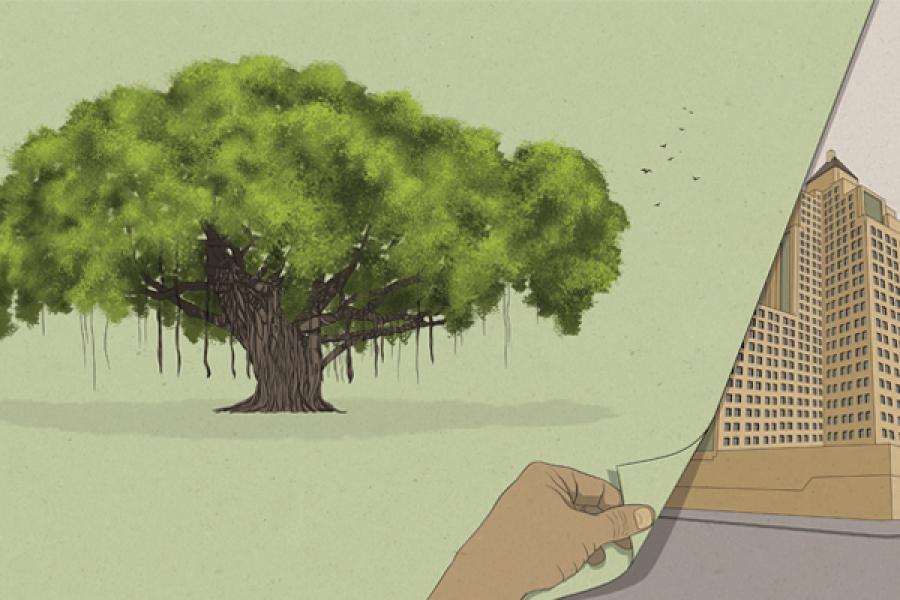
National Tree: Banyan
Why was it made a national symbol?
Ficus benghalensis, the Indian Banyan, is native to the country and inseparable from its cultural beliefs. The sacred tree is said to be the resting place of Lord Krishna. It is associated with several Hindu festivals, most notably Vat Savitri in which married women encircle the tree and tie a knot around its trunk to seek a long life for their husbands. The banyan’s long life (approximately 250 years) forms the core of this ritual. The tree has tremendous ecological value too. “It shelters and supports other fauna, and provides a habitat for animals and birds which take refuge in its crevices and trunks,” says Atul Sathe, communications manager, Bombay Natural History Society. They also serve as a source of shade in the country’s hot climes.
Current Status
India houses some of the largest and oldest banyan trees in the world. While the banyan continues to be a part of Indian festivals and rituals with little temples built underneath it, many are being felled for development purposes. Deforestation has been rampant in the Western Ghats along the banyan stretch of Pune-Satara-Kolhapur. “The banyan is a national heritage. The government needs to preserve it,” says Sathe.
(This story appears in the 22 August, 2014 issue of Forbes India. To visit our Archives, click here.)















